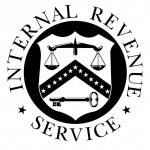 Every tax trial begins with a tax position that at least one party (often the government) thinks is uncertain. It isn’t much of a stretch to suggest that future tax trials will have some relationship to an uncertain tax position once reported on Schedule UTP. Accordingly, we hope to keep you up to date with changes affecting this form currently required of corporate taxpayers with assets of $100 million or more, but which will come to include taxpayers with as little as $10 million in assets by 2014.
Every tax trial begins with a tax position that at least one party (often the government) thinks is uncertain. It isn’t much of a stretch to suggest that future tax trials will have some relationship to an uncertain tax position once reported on Schedule UTP. Accordingly, we hope to keep you up to date with changes affecting this form currently required of corporate taxpayers with assets of $100 million or more, but which will come to include taxpayers with as little as $10 million in assets by 2014.
On February 3, the IRS revised the instructions for Schedule UTP, applicable to returns for the 2011 tax year. Notable changes include the treatment of changing members in a consolidated group, reserves affected by changed circumstances, the treatment of interest and penalties, and specific references to FIN 48 (which presumably should be read as ASC 740 for those familiar with the FASB codification).
One significant change in the instructions for schedule UTP in 2011 is the treatment of new and old members of a consolidated group. A new instruction advises:
If, after a subsidiary member leaves the consolidated group, the subsidiary, or a related party of the subsidiary, records a reserve in an audited financial statement with respect to one of the subsidiary’s tax positions in its former group’s prior return, the subsidiary should report the tax position on Part II of the Schedule UTP filed with its 2011 tax return, if it files a separate return. If the subsidiary is included in the return of another consolidated group that is required to file Schedule UTP, the common parent of that consolidated group should report the tax position on Part II of the Schedule UTP filed with its 2011 tax return.
A new example in the instructions, Example 11, explains how to record the uncertain tax position of a party subject to a corporate merger.
On June 30, 2011, MergerCo merges into AcquiringCo in a transaction in which AcquiringCo survives. MergerCo’s tax year ends on that date. After the merger, AcquiringCo records a reserve with respect to a tax position that is taken on MergerCo’s final return in its audited financial statements. That tax position must be reported on Part I of the Schedule UTP filed with MergerCo’s 2011 tax return even though the reserve was recorded by AcquiringCo. AcquiringCo should not report the tax position on the Schedule UTP filed with its 2011 tax return because MergerCo’s final return is a prior year tax return on which the tax position was reported.
Two new examples explain how to record tax positions that are new or revised because of changed circumstances. The first example, Example 2, addresses the treatment of a tax position a corporation reported on an earlier year return and determined was reasonably certain (i.e., not reported on Schedule UTP) but is then questioned by the IRS under examination. If the Corporation reevaluates the tax position and records a reserve for that prior year position in 2013, the corporation must report the tax position on the schedule UTP filed with its 2013 tax return even if the IRS identifies the tax position for examination prior to the recording of the reserve.
The second example addressing changed facts considers positions disclosed because of an expectation to litigate. New Example 5 instructs:
A corporation takes a position on its 2011 tax return for which no reserve is recorded because the corporation determines the tax position is correct. Circumstances change, and in 2013 the corporation determines that the tax position is uncertain, but does not record a reserve because of its expectation to litigate the position. That is, the Corporation or a related party determines the probability of settling with the IRS to be less than 50% and, under applicable accounting standards, no reserve was recorded because the corporation intends to litigate the tax position and has determined that it is more likely than not to prevail on the merits of the litigation. The corporation must report that position on Part II of the Schedule UTP filed with the 2013 tax return either if it records a reserve or if it does not record a reserve because it expects to litigate, even if that decision to record or not record occurs because of a change in circumstances in a later year.
Finally, the 2011 instructions offer new guidance on the treatment of interest and penalties when reporting tax positions on schedule UTP. A Corporation is not required to report accruals of interest on the tax reserve recorded with respect to a tax position taken on a pre-2010 tax return. Also, with regard to determining size and ranking of tax positions, if interest or penalties relating to the position is not separately identified in the books and records as associated with the position, the net amount of interest and penalties is not included in the size of a tax position used to rank the position or compute whether the position is a major tax position.
Read the new instructions here:
2011 Schedule UTP Instructions

